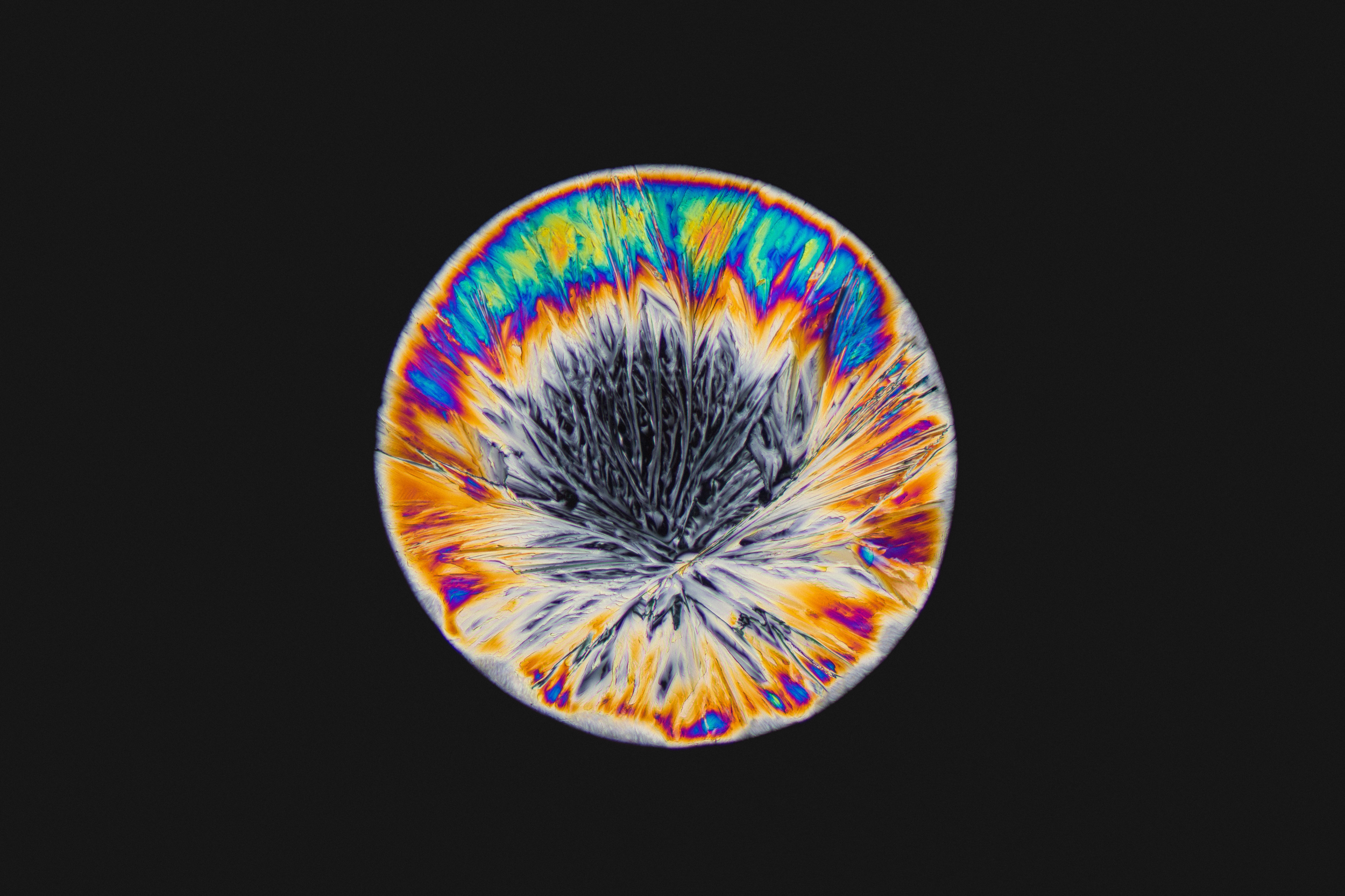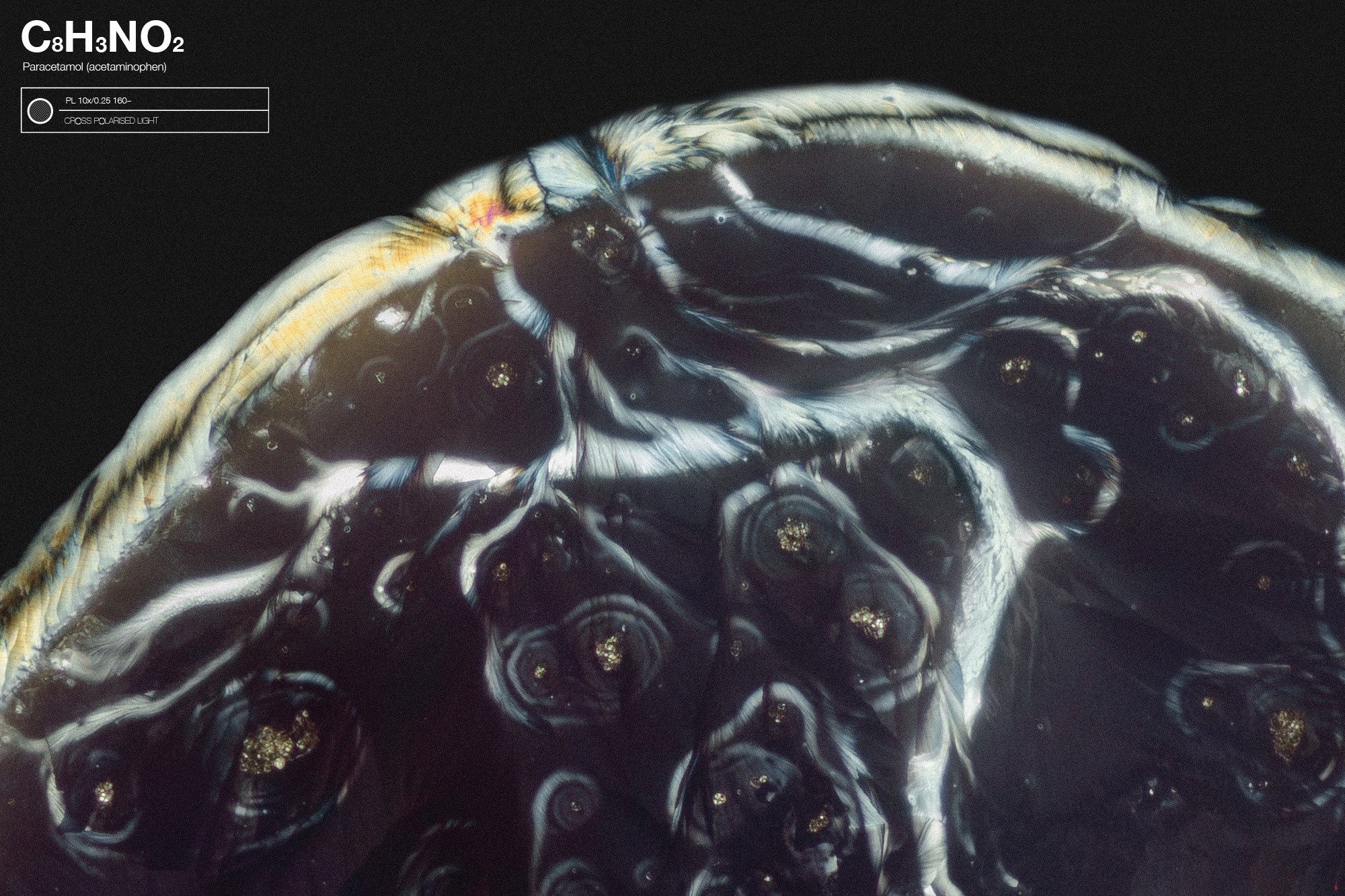Exposing the Pills We Pop
A photographer puts drugs under the microscope.

MDMA mixed with de-mineralized water, as seen under a cross-polarized microscope. Photo by Maurice Mikkers
This is a microscopic image of MDMA, the psychoactive drug popularly known as ecstasy, or Molly, that “produces feelings of increased energy, euphoria, emotional warmth and empathy toward others, and distortions in sensory and time perception,” according to the National Institute on Drug Abuse.
It’s one of multiple images of drugs, both illicit and legal, created by photographer Maurice Mikkers, who wants people to think more deeply about their relationship with these substances. “Most people, when you take a painkiller, you just pop one and you go. You don’t think about it unless it doesn’t work,” he says. (The photographs are part of a larger project called Micrograph Stories, in which Mikkers puts various items, including human tears and even a water flea, under the microscope.)
Mikkers first got the idea to photograph drugs when he temporarily fell sick around the beginning of 2014. During his time off, he started thinking about the medicines he was consuming. “I needed to take a lot of painkillers, [and] I was like, what am I actually taking? I know it’s what it says on the box; I know what it does,” he says.
Drawing on his background as a former intern doing toxicology and parasitology research at the Netherlands’ national public health department, Mikkers started photographing liquified samples of common, over-the-counter painkillers, such as acetaminophen, under his cross-polarized microscope (which allows him to bring in more light through the sample). The results were visually stunning, revealing psychedelic patterns such as oil slick-like waves and marble.

Acetaminophen. Photo by Maurice Mikkers
His interest piqued, Mikkers moved on to make a series on prescription medications, followed by illicit drugs, as more and more people became intrigued and suggested new prospective subjects to capture.
“It’s an interesting genre, and people were like, ‘Have you tried this [or that]?’” Mikkers says. He obtained some of the prescription drugs through people he knew, and later bought the illegal ones through the dark web, MDMA being the first purchase (he explained his process on his Medium blog).
While his images may appear beautiful, he says that the point isn’t to glorify these substances. Rather, by showing them close-up, Mikkers hopes that “people will then think maybe a little bit different about drug abuse or party use of certain types of drugs or prescription medicine.” He adds, “Behind every drug there is a story. What I am doing can shed light on that story.”
To prepare a drug sample like the one above, Mikkers begins by smashing a pill into a powder and then liquefying it by mixing in de-mineralized water or alcohol. “With that liquid, I can make a little drop” about 1–5 millimeters wide on a microscope slide, he says, which he lets dry at room temperature. Sometimes the concoction crystallizes in seconds; sometimes Mikkers has to put the slide in storage for weeks or months before seeing any notable differences. “I never know what’s going to happen.”
This particular MDMA sample “was with no doubt one of the most vivid, intense, and mind blowing results I had encountered,” Mikkers wrote on his blog.
Mikkers’ next series will focus on antibiotics; he currently has about 30 samples lying around his house. He says he wants to play with the fine line of “what is prescription medication for person A, and what would be a drug for person B.”
Chau Tu is an associate editor at Slate Plus. She was formerly Science Friday’s story producer/reporter.